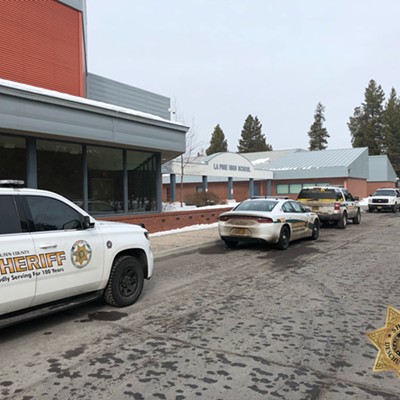The recent marking of the thirtieth anniversary of the eruption of Mount St. Helens brought back memories and a lot of people saying, "I'll never forget where I was when I heard the news."
It was an historic moment made even more amazing because few people thought they'd ever experience a volcano becoming dangerously active in their lifetime? That is, except, perhaps, for a few academics and scientists.
Of course, there were some old timers when St. Helens started to act up who remembered when Mt. Lassen in northern California became active in 1914 and spewed steam, ash and projectiles during the late summer and early fall of 1915.
But that was ancient history. In 1980, it was history in the making.
A number of Bend locals, foremost among them Jay Bowerman of the Sunriver Nature Center and Dr. Bruce Nolf who taught geology at COCC, essentially commuted to and from the St. Helens region hoping to be there when the mountain finally blew.
Most of the rest of us in Bend just checked in on the national and regional nightly television news reports.
The day (May 18,1980) of the eruption was gorgeous spring day in Bend. A running race got off to a shotgun start under sunny warm skies in Drake Park at 9 a.m.
A few minutes later John Carroll (now living in Portland), Mike Anthony (living now in Alaska) Gary Bonacker (of Sunnyside Sports fame) and myself set off to kayak the lower Deschutes from above Maupin to Shearars Falls.
It was hot and getting hotter when we drove into Maupin and headed up river to the put-in. It was looking like a perfect day for a leisurely whitewater adventure.
Everything went well until we got near Oak Springs and a gigantic dark cloud began forming in the ski to the north and west. It grew bigger and bigger and by the time we'd paddled to lower elevator rapid a quarter mile further down stream, the cloud was just about to completely block out the sun.
It did and the air temperature dropped by 10 degrees in seconds. Fearing a major thunderstorm was headed our way, we decided to cut our trip short. We retrieved our van, loaded it up and headed back to Bend all the time watching the huge cloud grow even more massive as it moved steadily east.
On arriving home, my kids came running out of the house screaming, "Mt. St. Helens blew, Mt. St. Helens blew, and the ash cloud is coming our way."
Well the edges of the cloud mass came close but not much ash fell on Central Oregon.
A couple of weeks later, we drove to Portland for the annual Cascade Runoff footrace arriving equipped with particle masks to wear in order to protect our lungs. They weren't needed. The skies had cleared for the first time in weeks.
Yet there were places where you could see a thick piles of ash anywhere from 3 to 7 inches deep.
Had we been in Portland the day of the eruption, we might have experienced what New Yorker magazine writer, and Portland native, Susan Orlean did.
In a recent blog posting, Orlean tells of coming out of the Portland Art Museum on the day of the eruption and seeing volcanic ash that was: "As soft as baby powder, if baby powder were made of shards of glass."
Ash that, "drifted down from the whitened sky landing in dove-colored piles on the ground."
Orlean writes that the experience that day was like, "the end of the world."
Being what seemed like a world away here in Bend we missed the post-eription scary moments, the fear of what was going to happen. No long after things settled back down on St. Helens, the Oregonian printed a large photo poster of the mountain just seconds after its initial eruption. The scene was spectacularly beautiful and chilling at the same time.



























